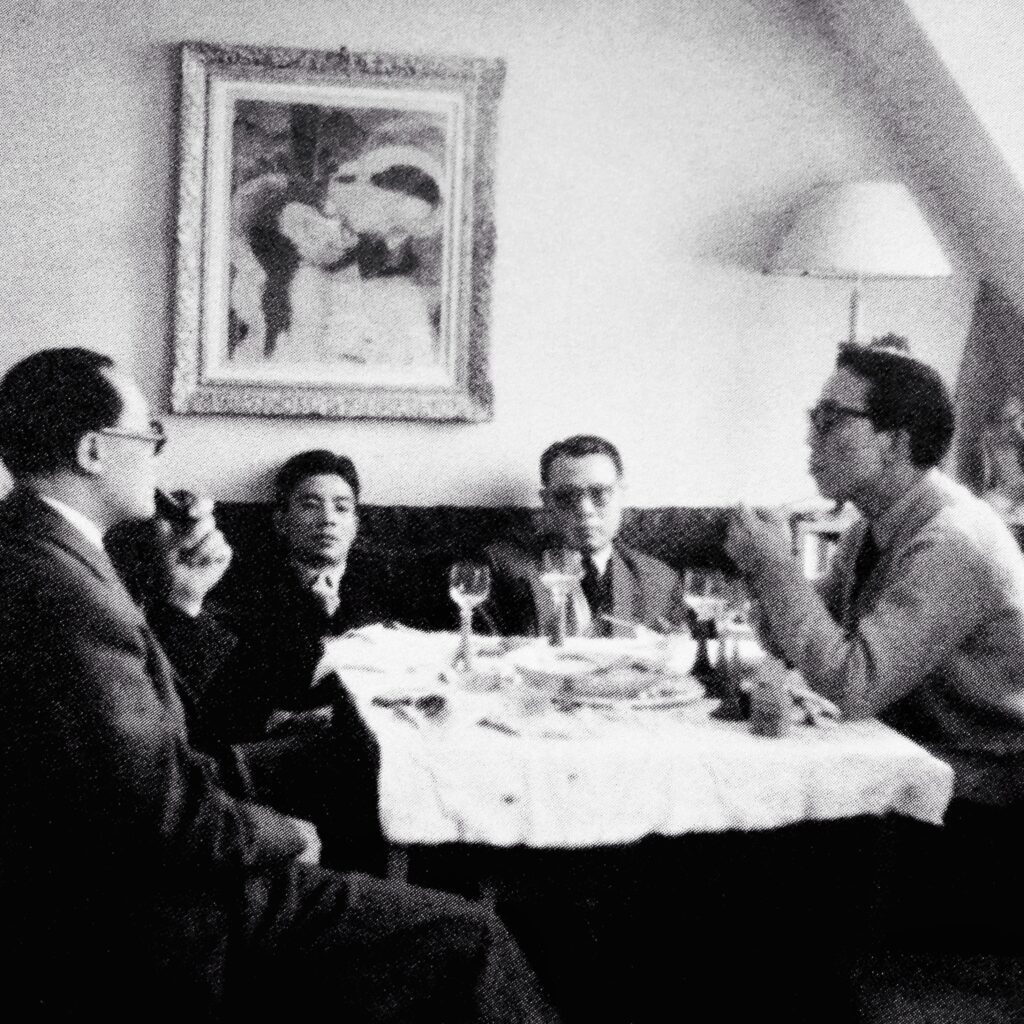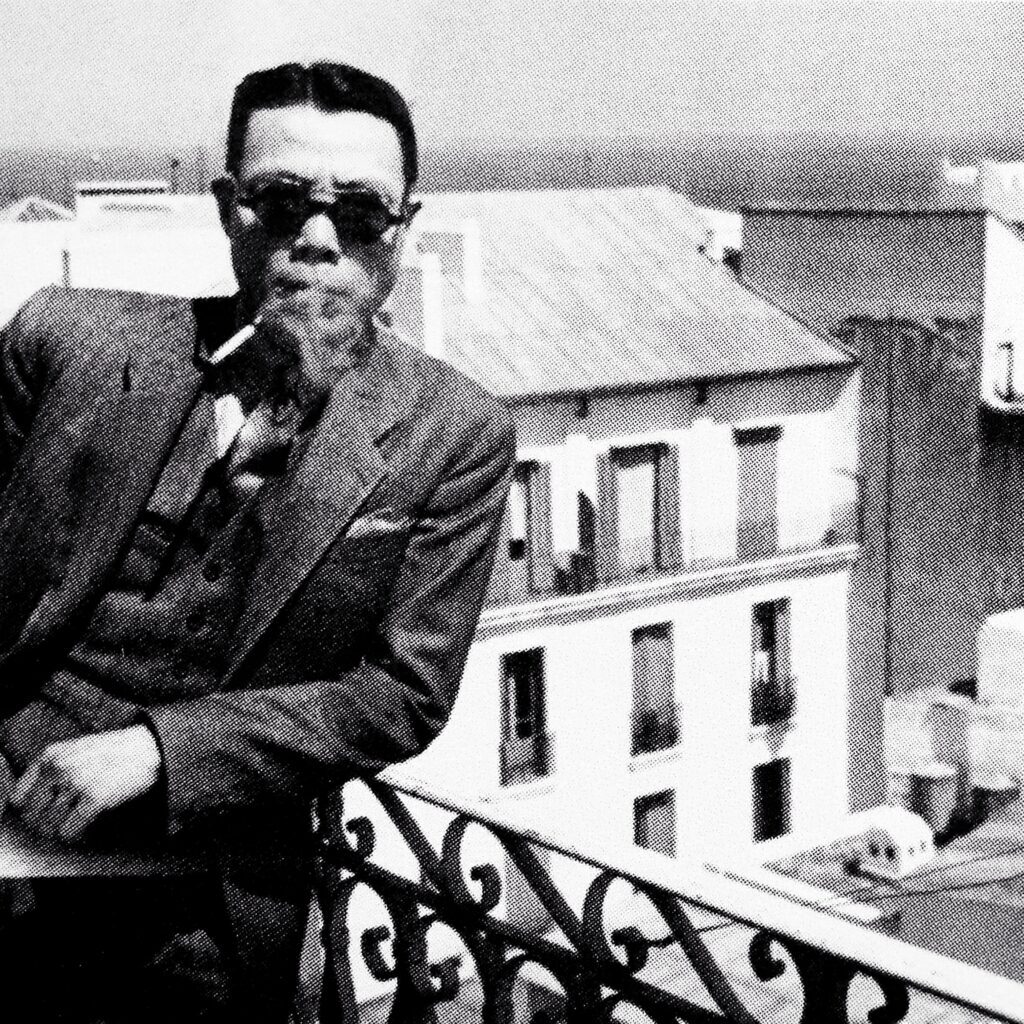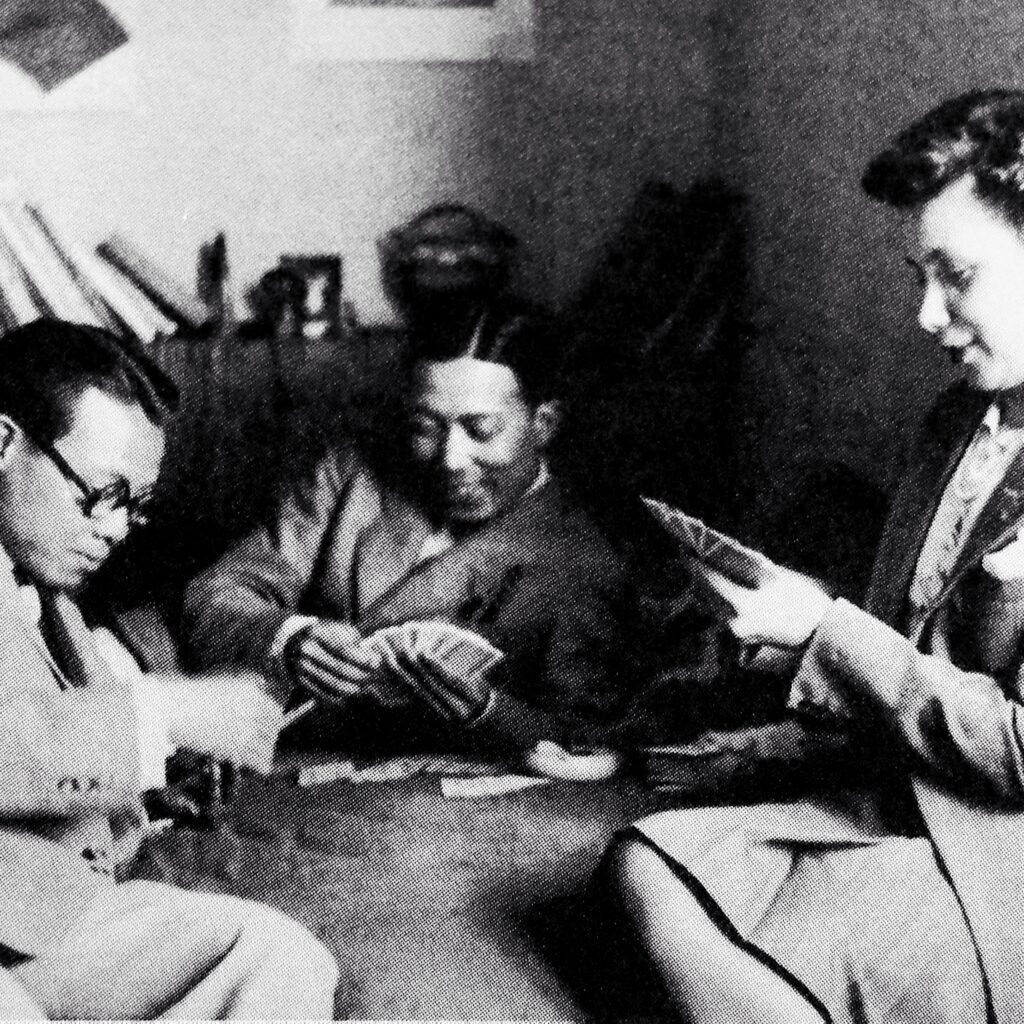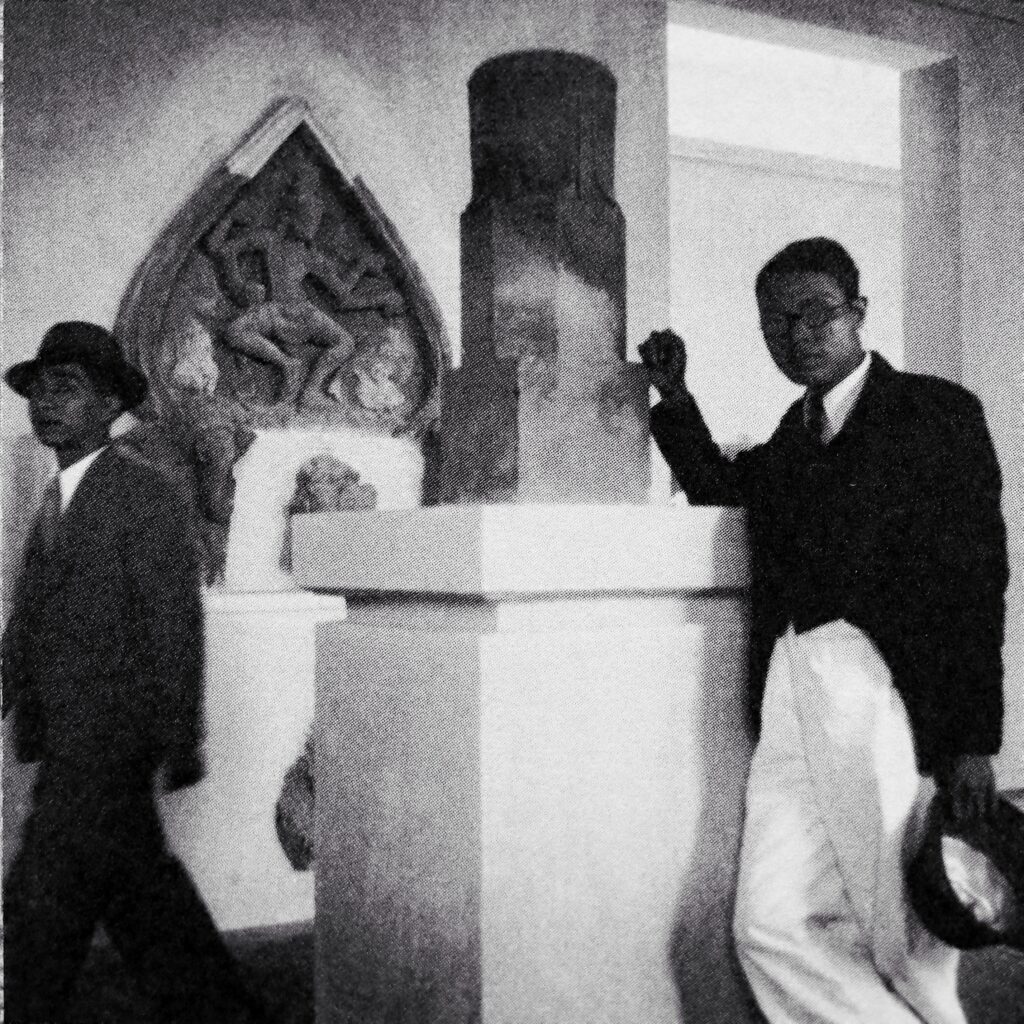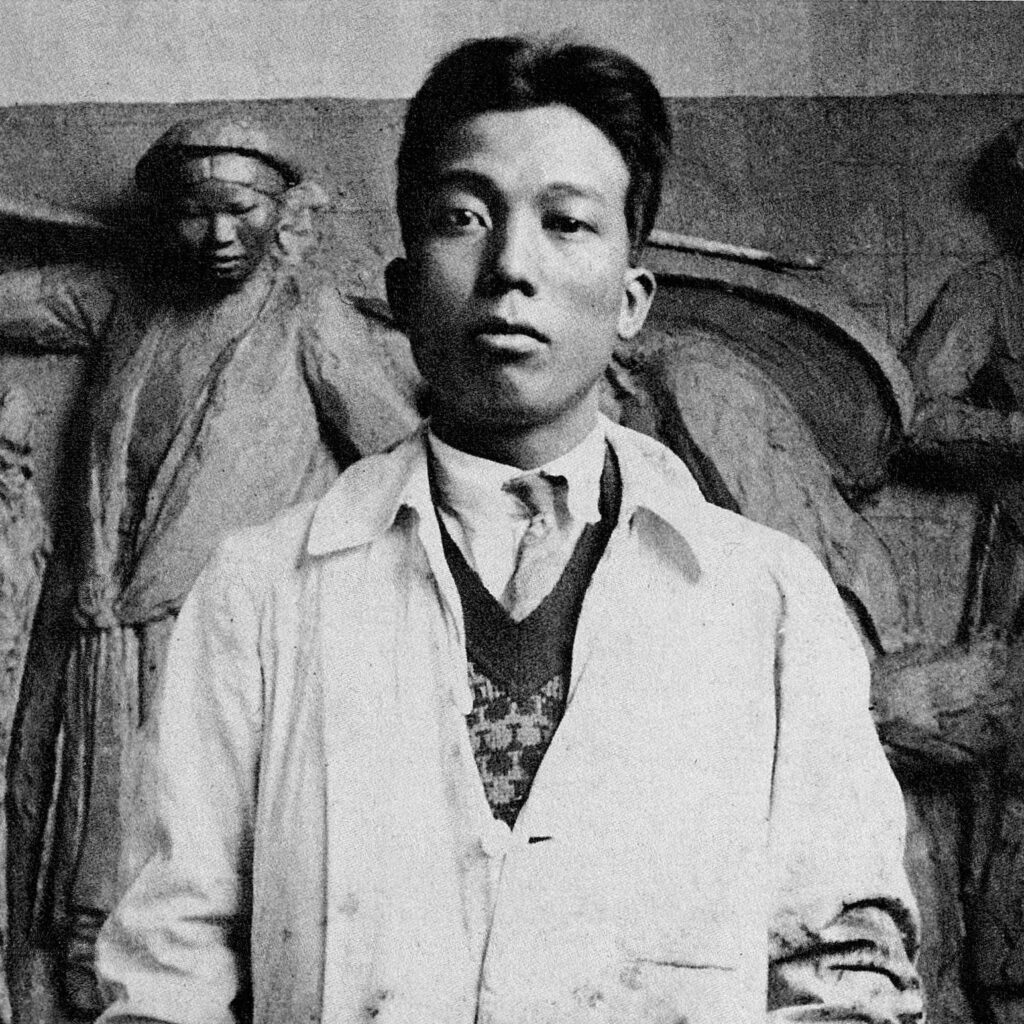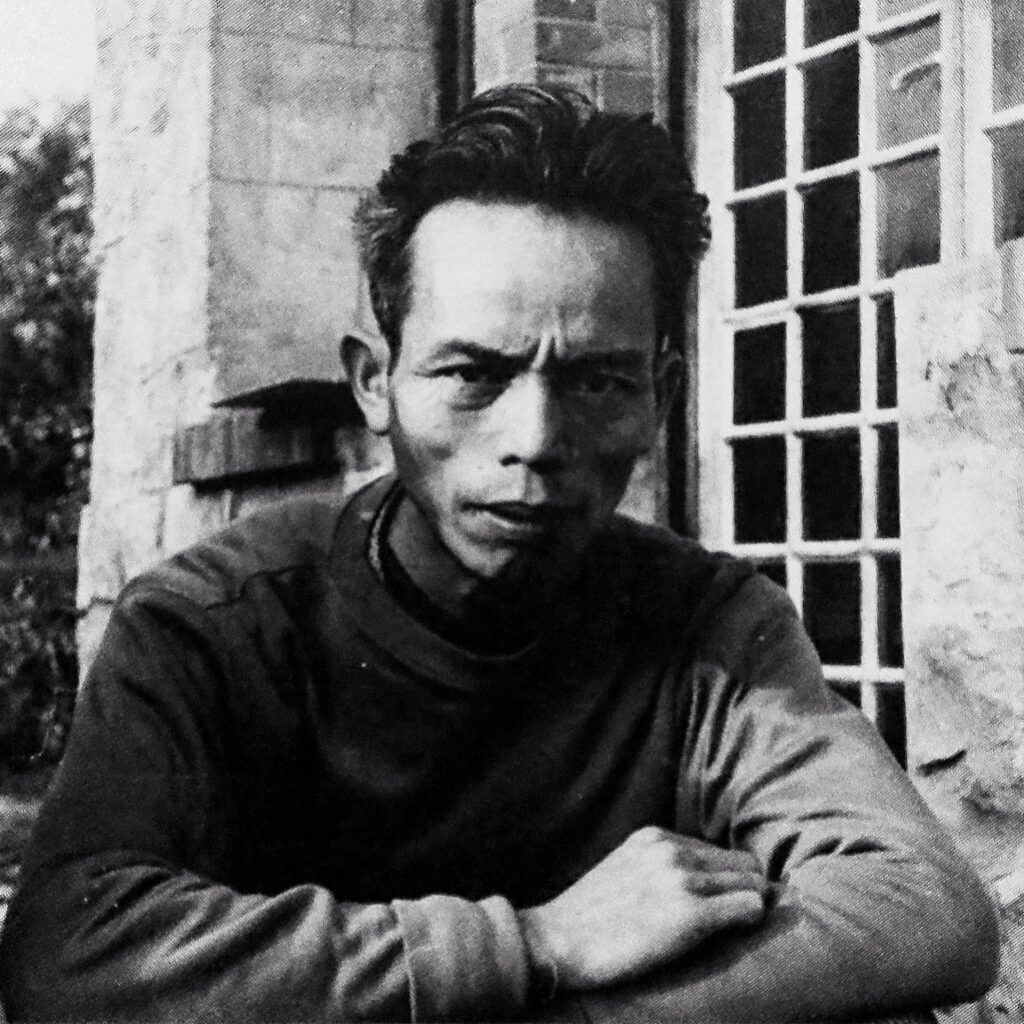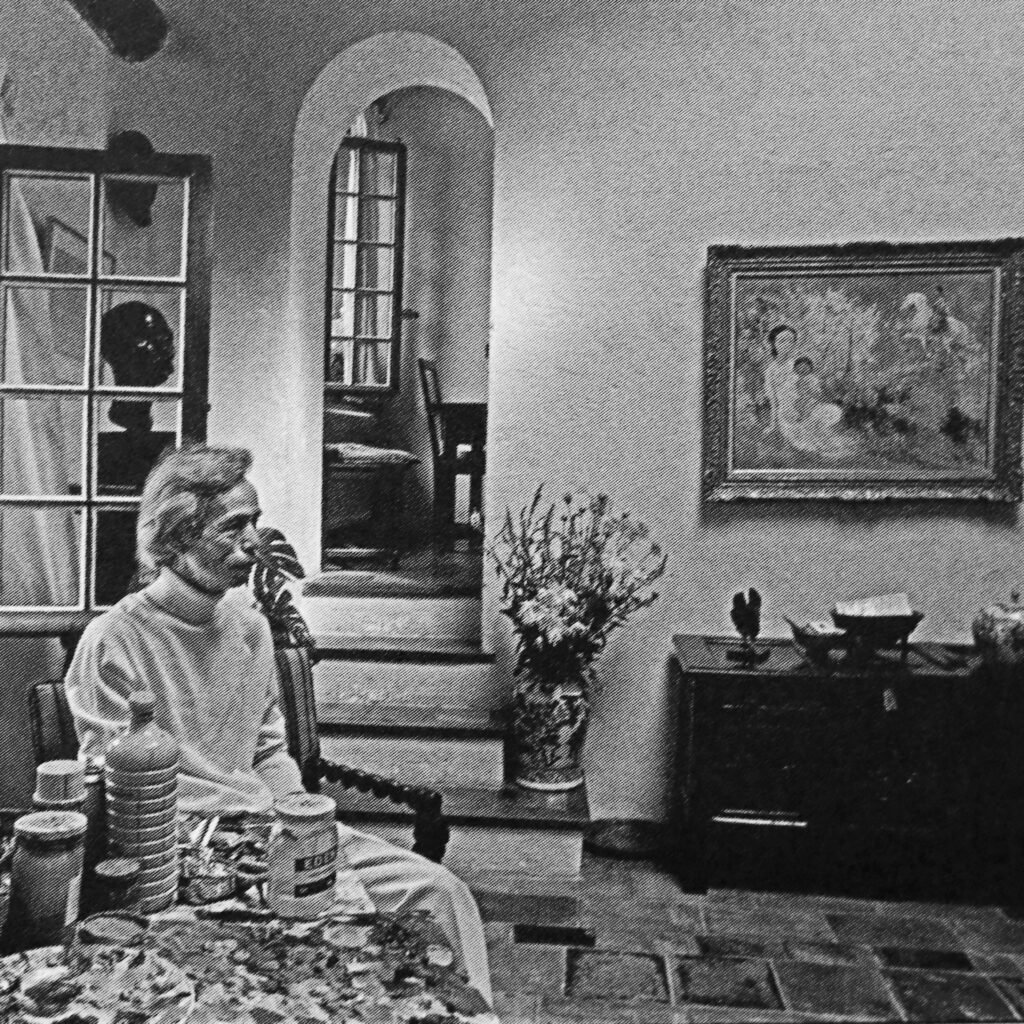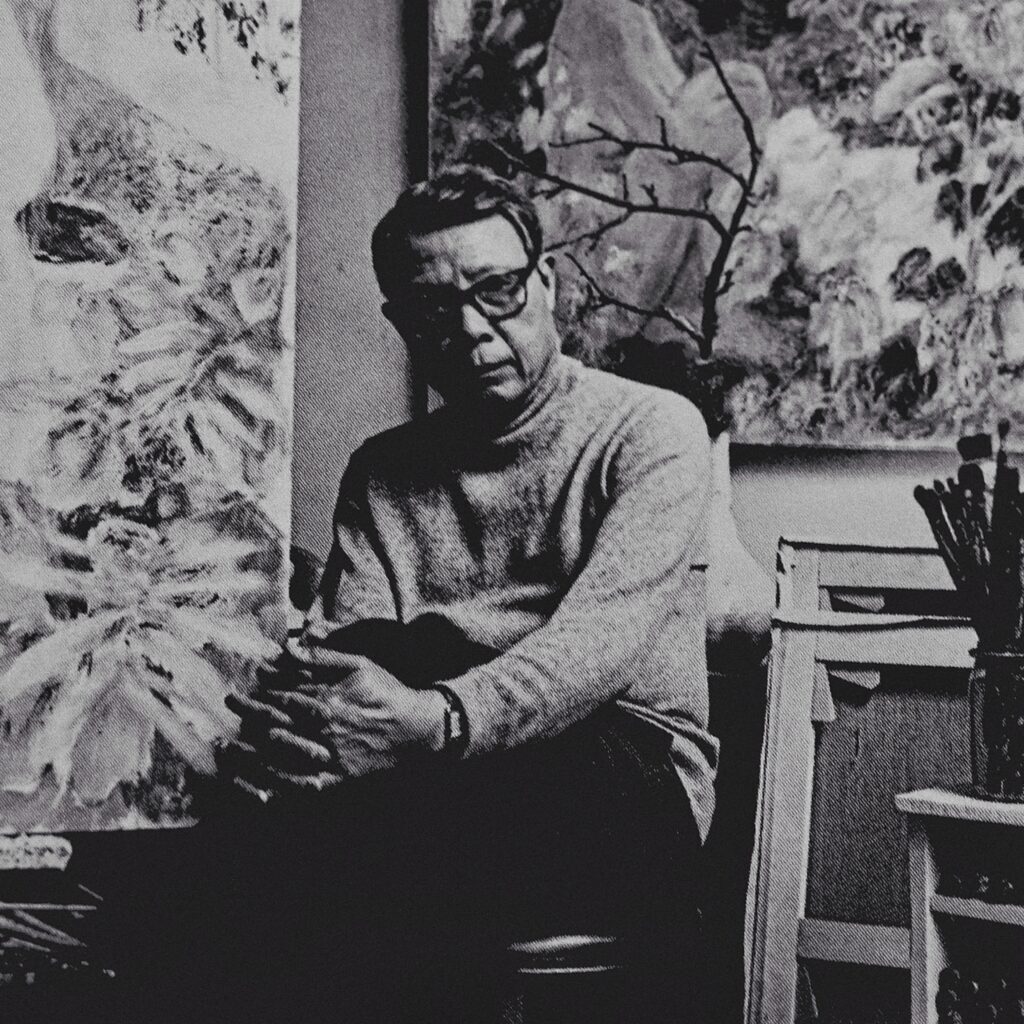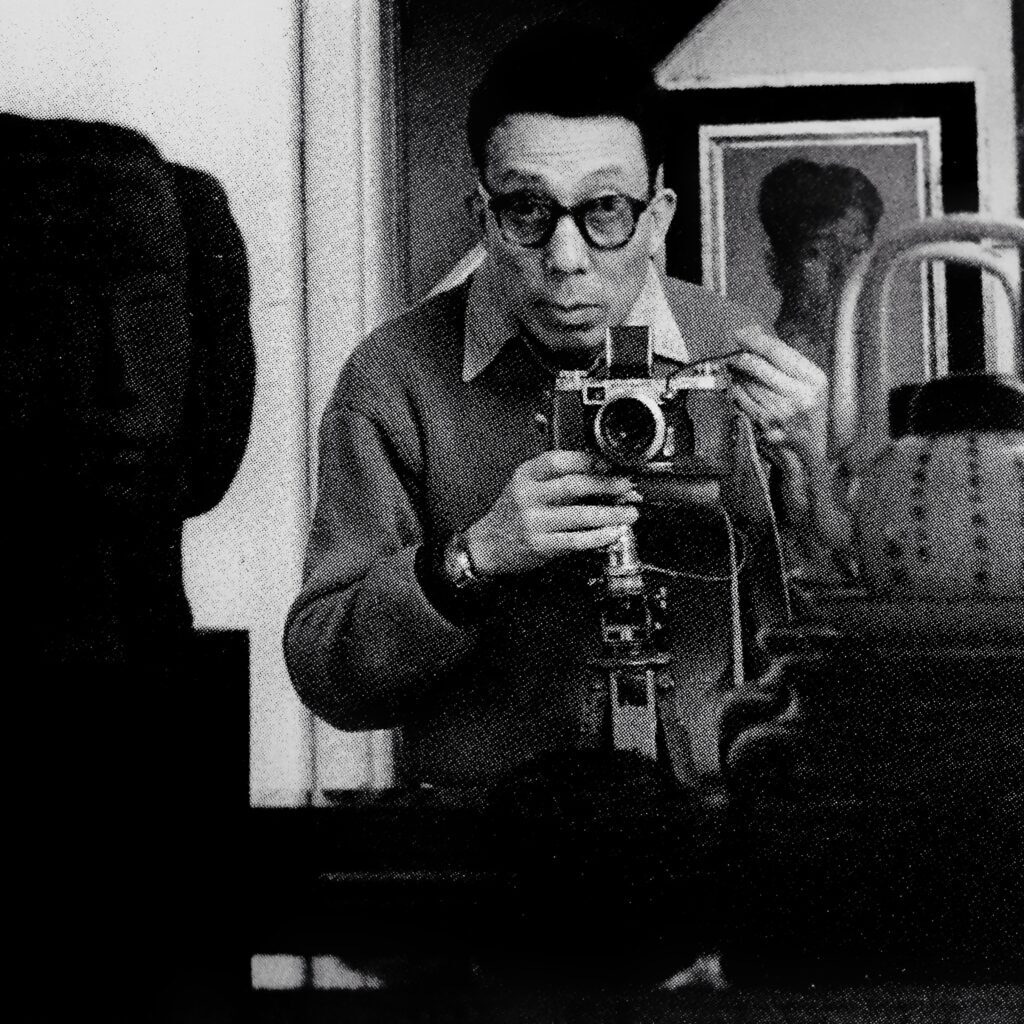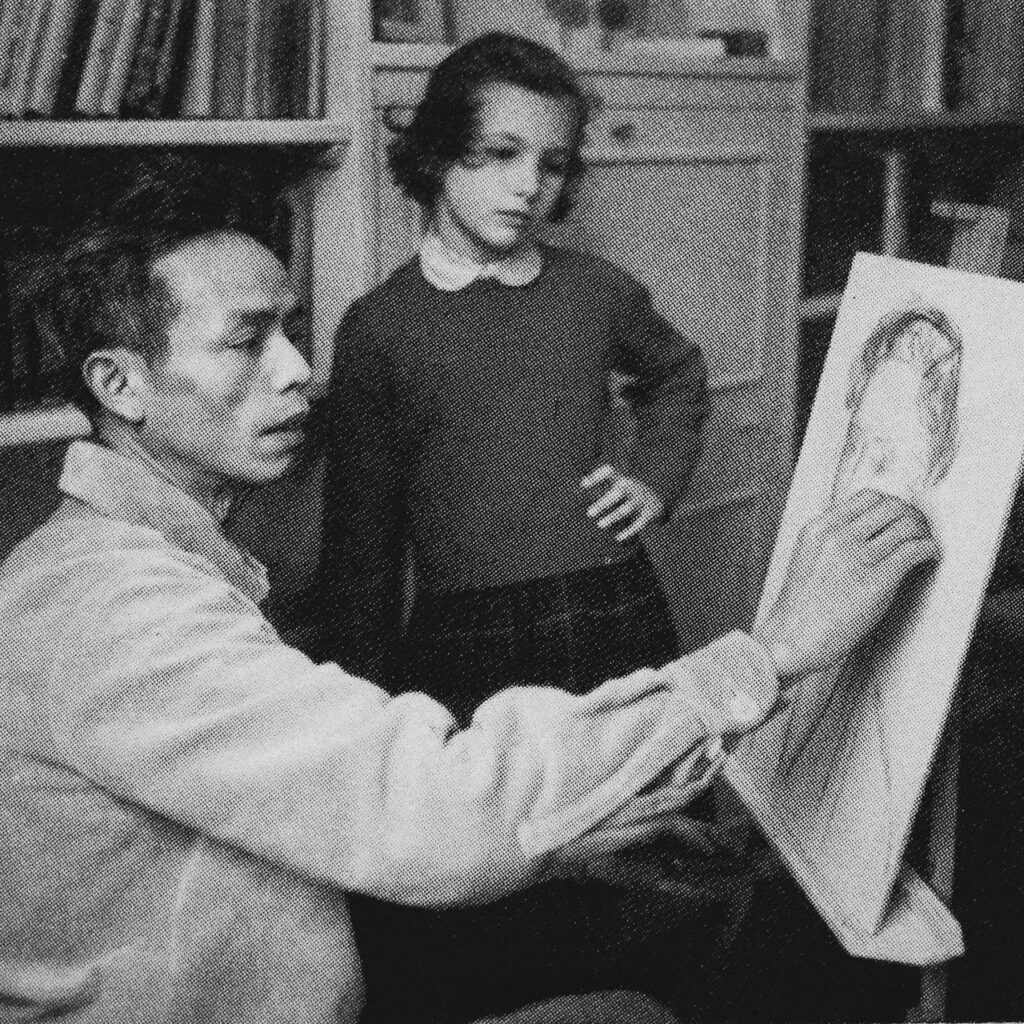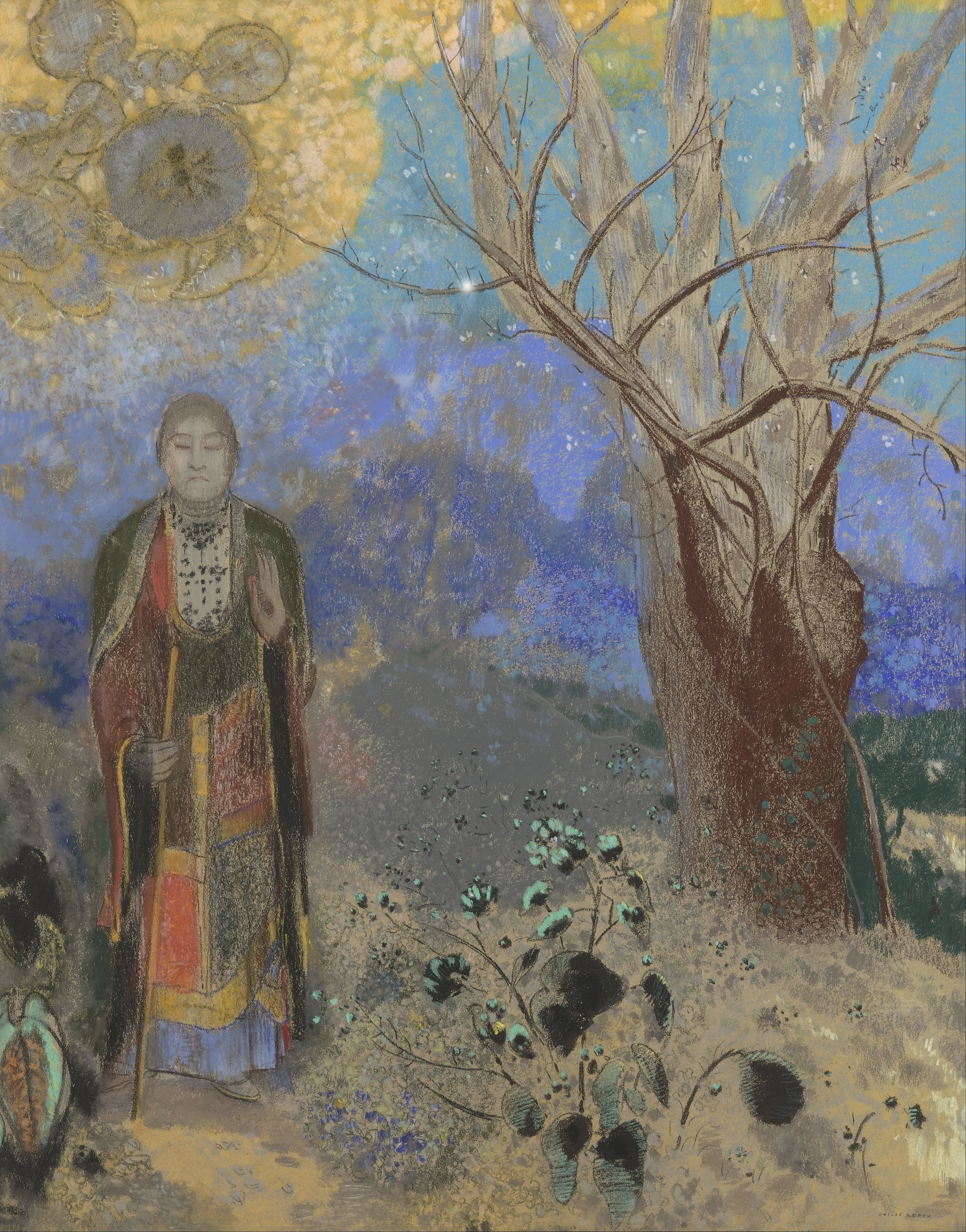
Odilon Redon (France, 1840–1916)
Le Bouddha (The Buddha)
pastel on beige paper
90 x 73 cm. (35 3/8 x 28 3/4 in.)
Painted around 1906–1907
Collection of Musée d'Orsay, Paris, France
From the 1890s, at the invitation of his friend Armand Clavaud, Odilon Redon developed a passion for botany, Hinduism and Buddhism. He devoured Paul Carus's L'Évangile du Bouddha (1894) and Sadakichi Hartmann's Le Bouddha excentrique (1897), and socialized with members of the Theosophical Society, founded in New York in 1875 and based in Tamil Nadu, India. This international association became one of the main vehicles for the spread of Buddhism in Europe. And of its Westernization.
For what Redon seeks here is to reveal the presence of the divine - transcendence - in every particle of matter, a leaf, a flower, whose mystery he explores through the expressive potential of pastel. Equipped with his hermit's staff, his Buddha, dressed in his multicoloured kesa, eyes closed in meditation, left hand raised with palm forward, stands beneath the tree of Awakening, probably a Ficus religiosa (Indian fig tree). At the beginning of the 20th century, Siddhartha Gautama was already a global icon, an object of worship and decoration whose traditional Asian stylistic codes blended perfectly with modern European aesthetics.

